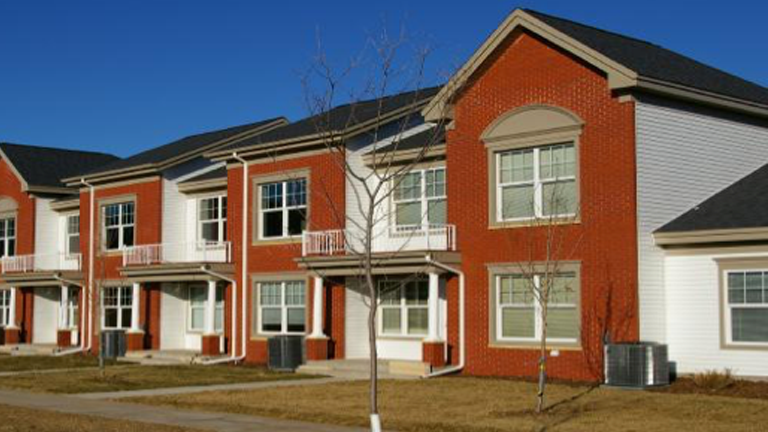City of Chicago is a Trailblazer
The City of Chicago is a Trailblazer in Delivering Government Services with Greater Efficiency
311 is at the core of the Chicago community.
The City of Chicago’s 311 City Services Call Center is truly community centric. It’s mission is to serve as the point of entry for residents, business owners, and visitors that need easy access to information regarding City programs, services and events—the kind of non-emergency services one might expect from his / her / their municipality as it works to keep the city clean, accessible, and orderly.
However, its mission also includes services one might not expect from their municipality; assisting non-governmental agencies (volunteer groups, non-profits, local businesses, etc.) to deliver improved customer service and manage resources more efficiently. Or documenting all non-emergency service requests in a CRM,[1] bringing a forward-thinking, technological mindset to the team’s purpose and definition.
This kind of breadth and depth demonstrates a real focus on the people that make up the core of Chicago. “We are concerned with the services the community needs today in order to stay healthy and vibrant, as well as what the foundation the community will need tomorrow in order to succeed long-term,” said Derrick Brownlee, Managing Deputy CIO for the City of Chicago, which is no small feat given the current trends impacting government missions.
From ordinary days to extraordinary times.
Two major trends impacting cities like Chicago.
The Brookings Institution, a non-profit research organization that looks at new ways to solve public policy issues, found that city budgets nationwide are facing an era of increased uncertainty given the current administration’s preference for devolution -- the transferring of power to a lower, local, or regional administration. “If cities are to successfully design, fund, and implement policies that provide high-quality educational opportunities, safe streets and neighborhoods, modern transportation networks, affordable housing options, and economic opportunities for all residents, they will need significant fiscal resources and flexibility.” 2
This unpredictable budgetary trend is in sharp contrast to current social trends brought in by today’s digital era. As timely, personalized, app-ready service models have become the new norm, they redefined what we as a society consider to be a quality customer experience from any enterprise-class organization (government included). This is especially true for local and municipal organizations, like the City of Chicago, that are citizen-facing.
The end result: a squeeze effect that is pushing local government to do more with less. “Our workforce is shrinking and our budget is shrinking,” said Brownlee, “but we have the same responsibilities with more demanding expectations. And with a city as diverse as Chicago, there is always something happening that needs our attention – music festivals, sporting events, one of the country’s largest marathons, and more, on top of public health and public safety.”

… and transform the foundation of the system.
The cloud: the core platform behind the core of the community.
Brownlee and team re-platformed Chicago’s 311 system on the FedRAMP-authorized Salesforce Government Cloud. It is a solution that transforms the typical call center into a modern contact center, unlocking everything from back-office information to self-service capabilities across a single, connected experience:
- Front-end customer experience: “Roughly 70% of our 311 calls are information related. How do I apply for a driveway permit, for example. You don’t need to call the city for that,” said Brownlee. So, the team set up online portals on Community Cloud, giving residents 24-7 access to self-help information via a watering hole strategy “Instead of having to make multiple phone calls or visit multiple websites, Chicago residents can keep coming back to our community portal, and get the answers they need quickly.”
- Case management: For the other 30% of calls that are indeed infrastructure related and thus require deeper engagements – fixing potholes, tree trimming, and so on – the team initiates a case in Service Cloud. Automated case routing and guided steps walk employees through the workflow, streamlining the process as employees move from intake to resolution.
- Knowledge articles serve up answers to frequently asked questions. Status updates are pushed to customers via email or text message automatically. “And we can do this all via mobile, enabling folks in the field or office with the same accessibility,” said Brownlee. “For example, we layered on Field Service Lightning. We use this to schedule and dispatch work orders while people are on-the-go using , eliminating the time it takes to come back to the office, get the next assignment, head back out...”
- Platform-level services: “This solution integrates with 3rd party systems, so that departments like inspections and permitting can receive a work order from us, complete the task, and close out the case without having to log into another system. We get notified automatically,” Brownlee explained. “It sits in the middle of several other systems, making it the core application for the city, really."
- Tableau CRM was layered on, allowing users to run their own reports and get real-time visibility to a given status, set of metrics, or catalyst that sparked a service inquiry. This also helps with capacity planning, as managers use the same reports to “anticipate what resources we’ll need when, say, people go on vacation, or when we get into the winter season,” said Brownlee.
“Most importantly, this approach gave us the flexibility to operate out-of-the-box, turning an investment in IT into an investment in the mission,” said Brownlee. “Or, in other words, turning taxpayer dollars into productivity benefits for the community.”
Learn more about Chicago’s cloud-based 311 system
The Salesforce Customer 360 Platform for Government
5 best practices from the City of Chicago
The resulting benefits stretch beyond productivity.
“Internally, we’re delivering services more efficiently,” said Brownlee. “Work order management, such as the inspections and permitting example, has reduced the amount of paper we send back-n-forth as an agency. We’re also able to push tasks out to departments with specific expertise versus trying to do all services centrally.”
And this shows in the City’s numbers: graffiti clean-up used to take 45 minutes to an hour to schedule the work order. With this new system, that time has been reduced to 5 to 10 minutes. And overall case closure rate has increased from 82% to 94%.
“Externally, two-way communications has made a huge difference. We publish service requests to the mobile app, so that residents can see what might have already been submitted in their area. That, plus increased communications about where we’re at on the delivery timeline has reduced the snowball effect, where residents would put in repeat requests if they didn’t get a response to their previous inquiry,” said Brownlee. “This improves our response time exponentially.”
“This strategy is helping us do more with less,” said Brownlee. “It’s the platform for city services, starting with 311 as the gateway for addressing public health, public safety, and the general well-being of the city.”






